#sumerian archaeology
Link
Since I haven’t seen it on tumblr yet, here’s an article on a major piece of Sumerian news - the recent discovery of the palace and temple at Girsu! Girsu was, for a time, the capital city of Lagash, its political peak occurring roughly halfway through its more than four millennia of occupation. The temple was dedicated to the city’s patron deity, Ninngirsu, a god of agriculture and warfare.
#sumerian news#sumerian#sumerian archaeology#sumerian mythology#archaeology#girsu#also I just realized this is my 1500th post on this blog! exciting
427 notes
·
View notes
Text

Detail of a temple wall from the Sumerian city of Uruk in Mesopotamia. The temple that dates back to the late 15th century BCE was dedicated to worshiping the Sumerian goddess Inanna, known as the Lady of Heaven. The Pergamon Museum, Berlin, GERMANY.
Photo by Babylon Chronicle
659 notes
·
View notes
Text
The city of Ur was one of the most important Sumerian city states in ancient Mesopotamia during the 3 rd millennium BC. One of best preserved and most spectacular remains of this ancient city is the Great Ziggurat of Ur.
38 notes
·
View notes
Text
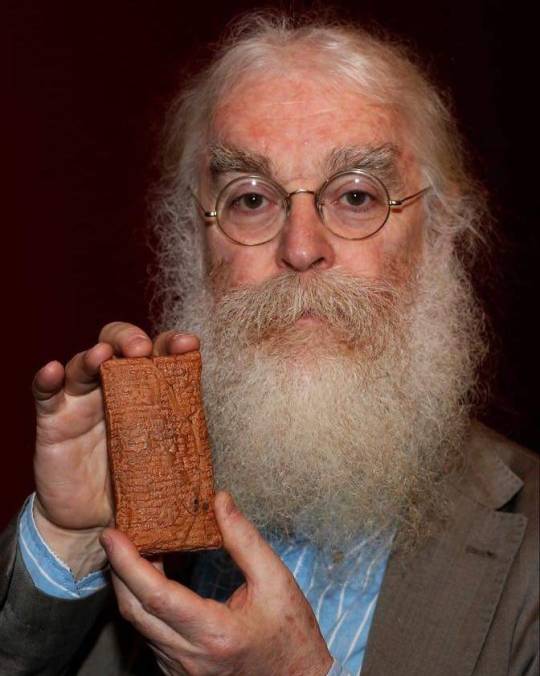
Dr Irving Finkel holding a 3770-year-old tablet, that tells the story of the god Enki speaking to the Sumerian king Atram-Hasis (the Noah figure in earlier versions of the flood story) and giving him instructions on how to build an ark which is described as a round 220 ft diameter coracle
More: https://bio.link/museumofartifacts
149 notes
·
View notes
Text
Sumerian
Immagin web museum

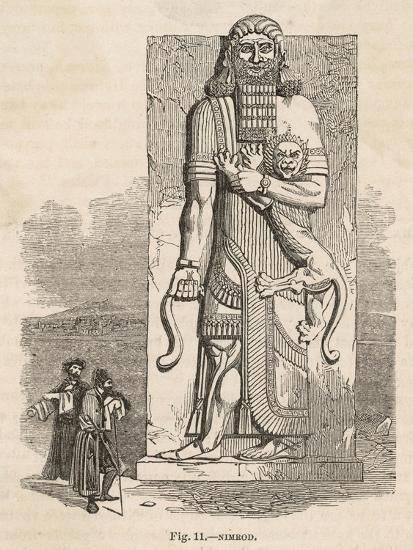

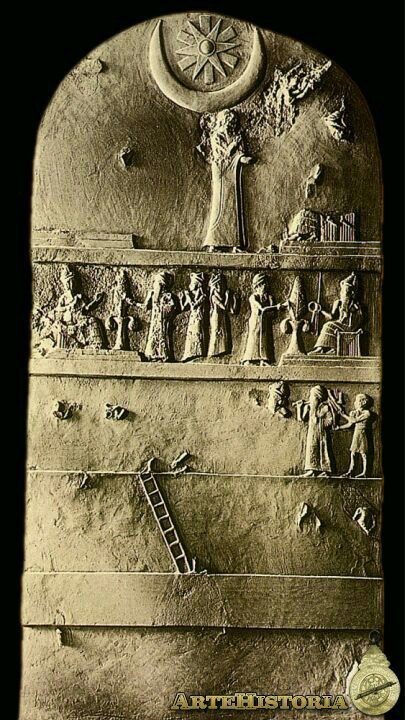

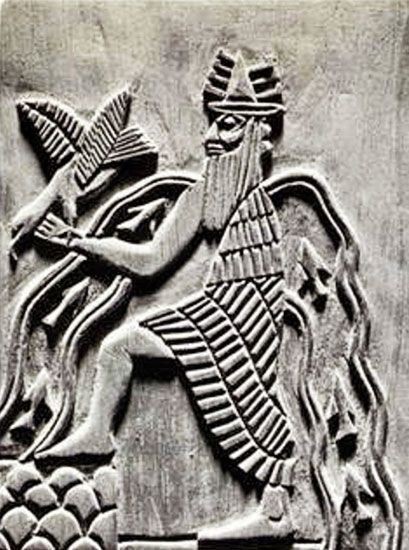


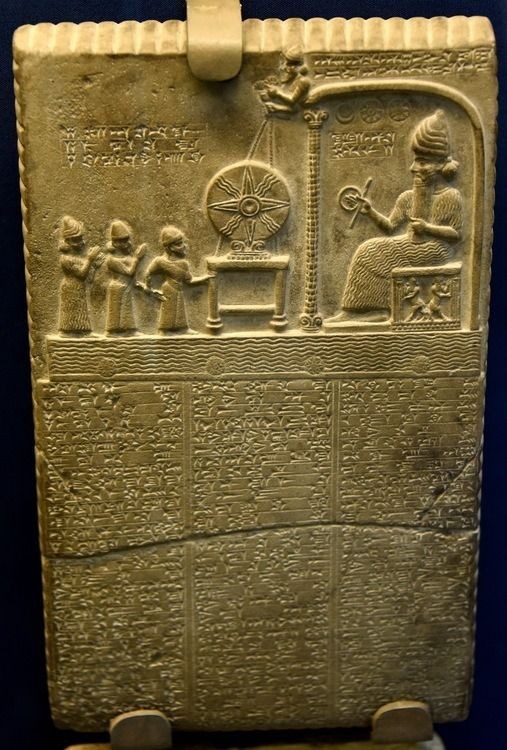
#enkidu#enki bilal#archaeology#ancient sumeria#sumerian#mitology#hellenic deities#hellenism#hellenic polytheism#polytheist#polytheism#ancient babylon#ancient art#paganism#deity work#deity#witchcraft#witch#witches#satanist#satanism#lefthandpath#magick#baby witch#mesopotamia#gilgamesh#mitologic#archeology#brujas#hellenic pagan
64 notes
·
View notes
Text

In this 1934 depiction, Amorite king Hammurabi goes to war. Illustration courtesy Private Collection/Look and Learn/Bridgeman Images.
Learn more / Daha fazlası
archaeologs.com/w/amorites/
#archaeologs#archaeology#archaeological#history#dictionary#art#hammurabi#amorite#amorites#babylonia#babylon#sumerian#mesopotamia#akkadian#illustration#drawing#arkeoloji#tarih#sanat#sümer#sümerler
74 notes
·
View notes
Photo

Stone tablet with proto-cuneiform inscription
Mesopotamia (Iraq), probably Girsu (modern Tello)
Early Dynastic period, ca. 2750-2500 BCE
The text records allocations of land to various individuals, and it mentions the name of a certain Enhegal, who seems to bear the title “king (lugal) of Lagash,” but who is otherwise not attested in historical sources.
Penn Museum, Philadelphia, PA, CBS 10000
https://www.penn.museum/collections/object/347463
204 notes
·
View notes
Text
Hearing this gives me chills. I'm sure it's only an approximation of what it sounded like back in Sumer, but still.
61 notes
·
View notes
Text
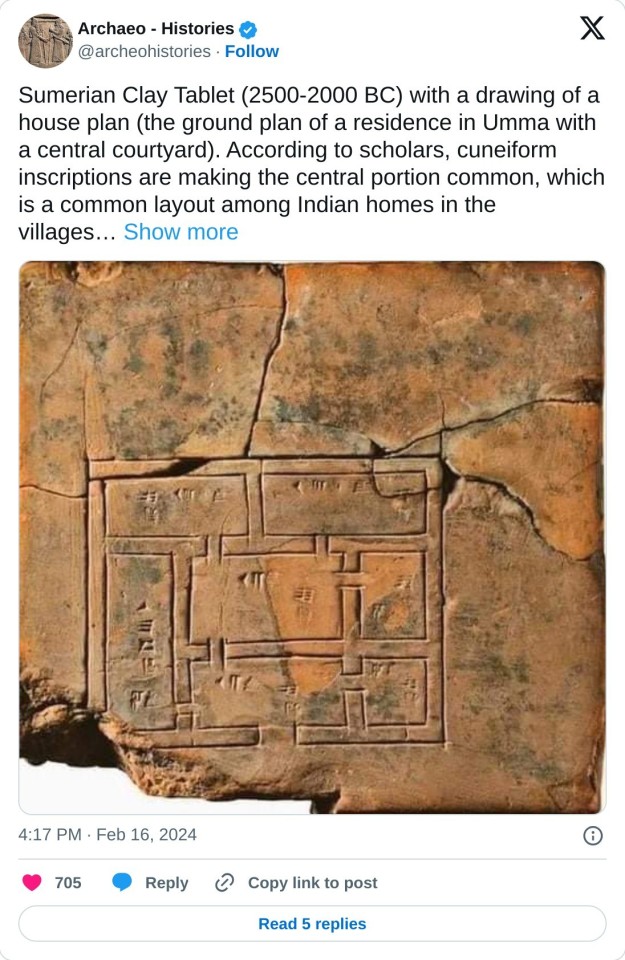
Sumerian Clay Tablet (2500-2000 BC) with a drawing of a house plan (the ground plan of a residence in Umma with a central courtyard). According to scholars, cuneiform inscriptions are making the central portion common, which is a common layout among Indian homes in the villages too. As the ancient and the present Mesopotamian, Persian and Indian architecture - believes in keeping the central portion of a home open from the top - to let in elements of nature. Plus used as a common meeting room for family members. Sumerians considered as the first major civilization of human history, flourished around 4000-2000 BC, between the rivers Tigris and Euphrates of the crescent fertile. This area was prone to violent weather conditions, such as unexpected flooding. These chaotic conditions resulted in Sumerians becoming a highly religious society. However, bleak nature of their religion where the afterlife was essentially a mud pit reflected the harsh conditions of their existence. Their art was also religious in nature as part of an effort to honor their deities in hopes that their lives would proceed with as little tragedy as possible. Art and buildings were constructed of plentiful clay of region as well as wood, copper, rock, and semi-precious stones like lapis lazuli. Study of Sumerian architecture is based on available archaeological evidence, pictorial representation of buildings, and texts on building practices. Materials used to build a house were similar but not exact as those used today: reeds, stone, wood, ashlar, mud brick, mud plaster and wooden doors, which were all naturally available around city, although wood was not common in some cities of Sumer. Although most houses were made of mudbrick, mudplaster and poplar. Houses could be tripartite, round or rectangular. Houses had long-roofed central hallways, courtyards, and storeys. Most houses had a square centre room with other rooms attached to it, but a great variation in size and materials used to build houses suggest they were built by inhabitants themselves. Smallest rooms may not have coincided with the poorest people; in fact, it could be that poorest people built houses out of perishable materials such as reeds on outside of city, but there is very little direct evidence for this. Houses could have shops, workshops, storage rooms, and livestock in them. - Subscribe for Detailed Post - Vorderasiatisches Museum, Berlin
#Vorderasiatisches Museum#Berlin#archaeohistories#architecture#mesopotamia#archaeology#Sumerian#ancient#bulding
3 notes
·
View notes
Note
Not a vocabulary ask 😅 but I was wondering if lapis lazuli had a special significance for the Sumerians? I remember reading a translation of the Epic of Gilgamesh and the stone pops up in relation to the divine a bit. Or is it simply that lapis lazuli was the gemstone they prized the most?
Hello! Lapis lazuli features frequently in Sumerian literature and appears in many Mesopotamian archaeological sites.
The lapis used in Mesopotamia is one of the clearest pieces of evidence for long-distance trade in that era, given that Mesopotamian lapis comes from mines in what is now northeastern Afghanistan; Afghan lapis has been found as far as Egypt and Mycenae(1,2) but by far the most has been excavated in Mesopotamia.(3) And the decline in frequency of lapis objects in Mesopotamian sites starting in the early second millennium BCE coincides with the breakdown of these networks,(1) contemporaneous with the decline of the Indus Valley civilization that was a major trading partner of Sumer and later Akkad.
In terms of associations, lapis lazuli's main connotation was wealth - possession of a lapis object was only available to the very wealthiest in Sumer, or for use in temples. Most objects from the Sumerian era made of lapis are small, like the eyes inlaid in larger sculptures, or small amulets or trinkets.(1) This is because "lapis lazuli was shipped from Iran to Mesopotamia in the form of small blocks or semi-processed masses."(2) So references to large lapis objects, like Inanna's lapis lazuli chariot that she offers to Gilgamesh in the Epic of Gilgamesh, show their fantastical nature, beyond the scope of what one could actually see in contemporaneous Mesopotamia. Who could be richer than a goddess?
The Bull of Heaven, also featured in Tablet VI, has horns "each [of which] was thirty pounds of pure lapis lazuli / and their cases were two fingers thick" (VI.161-62, Helle (2021) translation), an unimaginable bounty, while also showing the other major symbolism of lapis - the sky. Its blue was associated with the heavens, and the flecks of gold often referred to in literature as embedded in the lapis were the sunlight that shines through it.(1) So it's only appropriate for a heavenly bull to have humongous lapis horns.
For more on lapis in ancient Mesopotamia, see (1) Moorey 1994: 85-91; for how lapis was mined in ancient Afghanistan, including photos & maps, see (2) Tosi & Piperino 1973; and for more on the lapis trade, see (3) Hermann 1968.
62 notes
·
View notes
Text
“I told Sophie that I knew of even older accounts written in both the Sumerian and Akkadian languages,” said Dr. Arboll, whose expertise is ancient accounts of medical diagnoses, prescriptions and healing rituals.
“So after dinner, we double-checked,” said Dr. Rasmussen, who specializes in hedgehogs.
... it is old news to Mesopotamian scholars. “In the small, specialized field of Assyriology, there is a tendency to focus inward and not so much outward,” Dr. Rasmussen said. “As much as Assyriologists like to argue among themselves, they don’t really talk to other people.”
3 notes
·
View notes
Text
Ashurbanipal's name

Ashurbanipal, the powerful king of New Assyria, known for his famous wars and library.
His name consists of three parts:
First part: The name Ashur is the great god of the city of Assyria.
Second part: the verb "bani" means "creator".
Third part: the name "Apil" means "heir".
His name means "Assyria, the creator of the heir".
His name refers to two things: A) He is the heir of Ashur, the great god of the Assyrian city and empire. b) He received his power and kingdom from Ashur.
Ashur is the great god of the city of Assyria and the national god of the people of the Assyrian Empire.
Her name in Sumerian-Akkadian cuneiform:
𒁹𒀭𒊹𒆕𒀀
𒁹𒀭𒊹 refers to Ashur, the great god of the Assyrians. [ashur]
𒆕 refers to the Sumerian verb "to build", which in Ashurbanipal's name refers to the Akkadian verb "creator". [bani]
𒀀 refers to the word heir. [apil]
Follow my YouTube channel. Silent tablets documentary, short videos from ancient history.
Follow my Twitter.
#archaeology#ancient mesopotamia#ashurbanipal#ancient assyria#assyrian#akkadian#akkadian language#semitic languages#𒁹𒀭𒊹𒆕𒀀#𒁹𒀭𒊹#mesopotamia#ancient history#sumerian#archeology
16 notes
·
View notes
Text

Sumerian foundation figure, dating back to the Early Dynastic period around 2900–2350 BCE. The Pergamon Museum, Berlin, GERMANY.
Photo by Babylon Chronicle
255 notes
·
View notes
Text

Although traditional science believes this to be simply absurd, a great deal of evidence has been found worldwide that supports the ancient alien theory. Perhaps the most critical connection between the emergence of civilization and alien beings can be found in the very history of humanity, hidden in ancient manuscripts and clay tablets that have survived for thousands of years.
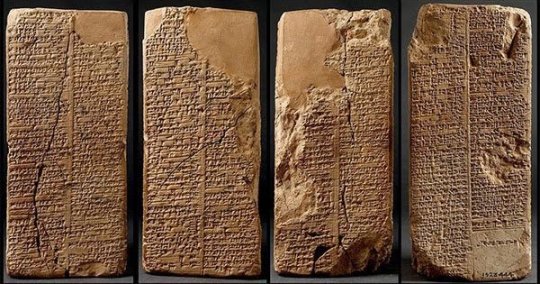
Traditional scholars believe that not everything written on the Sumerian Kings List is accurate. They often claim that the Sumerian Kings list is a mix of prehistoric and mythological accounts, which speak of gods who ruled the Earth, enjoying absurdly long reigns. But suppose we travel half a world, from ancient Mesopotamia to the Americas. In that case, we will discover how the sacred book of the old Maya, Popol Vuh, describes the beings who created humanity.
The creators of our race in Popol Vuh are referred to in the texts as:
The Creator
The Ancients
The First
The Dominator
Those Who Created
Those Who Gave Life
Those Who Hovered Over Water Like Light Aurora
Although these ancient texts, mentioned above, are extraordinary, perhaps even more so are the countless artifacts that have been found scattered across the globe, representing beings frighteningly similar to modern astronauts. And while speaking of astronauts, Al Worden (February 7, 1932 – March 18, 2020), former astronaut and member of the Apollo 15 mission, had something fascinating to say about alien life while speaking with Good Morning Britain.
Al Worden was an American astronaut and engineer who was the pilot of the Endeavor Command Module during the Apollo 15 Lunar Mission in 1971. He is one of 24 people who went to the Moon between 1969 and 1972. The ex-astronaut is also listed in the Guinness book of world records as “the most isolated human being,” after spending six days alone orbiting the Moon, completing 75 laps around him.
While speaking to Good Morning Britain, Al Worden was asked if he believed the aliens were real, and his response surprised everyone who watched the interview. The former Apollo 15 member said that the aliens are accurate and came to Earth in the distant past and created our civilization. If we want to look for evidence, we have to look at ancient Sumerian literature.
“We are the aliens, but we think that they are other people. But we were the ones who came from somewhere else because someone had to survive, and they got into their little spaceships and came over here and landed, and then started civilization here. And if you don’t believe me, get books on the ancient Sumerians and see what they have to say. They will explain it to you right away.”
#Apollo 15 Astronaut Claims Extraterrestrials Created The Human Race - Archaeology and Ancient Civilizations#Popol Vuh#astronauts#Al Worden#apollo 15#nasa#sumerians
3 notes
·
View notes
Text
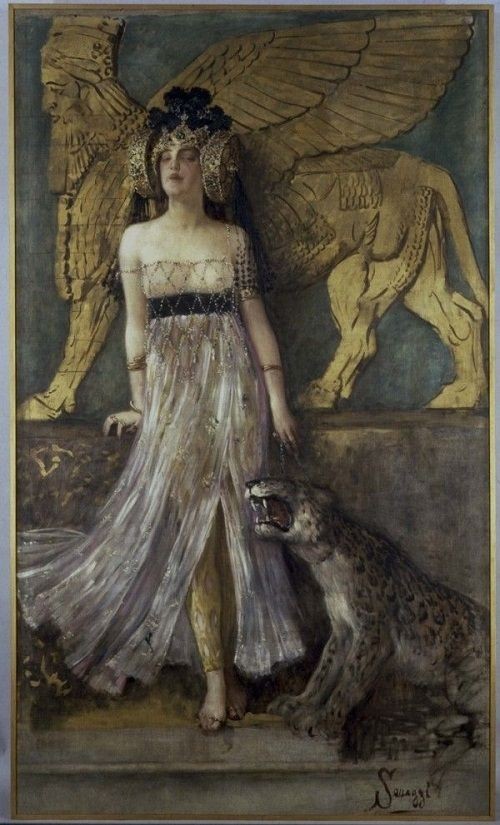
#witch#witchcraft#witches#witchblr#beginner witches#beginner witch#godess#paganism#ancient history#art history#history#ancient babylon#ancient sumeria#sumerian#ancient culture#ancient assyria#mesopotamia#ancient architecture#archaeology#architecture#grimoire#dark aesthetic#occult
42 notes
·
View notes
Text
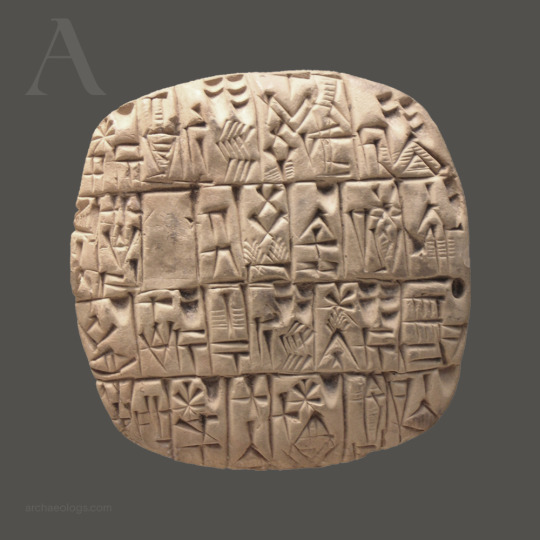
Summary account of silver for the governor written in Sumerian Cuneiform on a clay tablet. From Shuruppak, Iraq, circa 2500 BC. British Museum, London.
Learn more / Daha fazlası
Shuruppak https://www.archaeologs.com/w/shuruppak/
#archaeologs#archaeology#archaeological#dictionary#history#sumerian#cuneiform#clay tablet#shuruppak#iraq#british museum#arkeoloji#tarih#sanat
263 notes
·
View notes